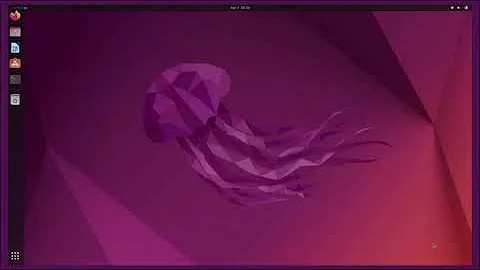Replace Win10 with Ubuntu on Dell XPS13 9380, SSD fully occupied by NTFS & can't be found
Solution 1
I've had the same problem as you with the same laptop. I found that as well as changing grubx64.efi to mmx64.efi I also needed to change the SATA Operation option in the BIOS from RAID to AHCI. I also disabled secure boot in the BIOS but am unsure if that helped.
Also, to access the startup menu and bios easily, you must repeatedly tap the F12 key as the laptop boots as soon as you see the Dell logo. Hope this helps.
Solution 2
I am providing my experience here for future readers. I successfully installed Ubuntu 18.10 on a brand new xps 13 9380 (white) using the following steps:
- Boot into windows and do the following:
- Setup an Ubuntu bootable USB using the method found here: https://tutorials.ubuntu.com/tutorial/tutorial-create-a-usb-stick-on-windows#0
- Disable BitLocker by going to the following: Control Panel > System Security > BitLocker Drive Encryption and disabling it.
- Shutdown windows. Power on, and as soon as the lights on the keyboard come on start tapping the F12 key to enter Bios.
- In the Bios you'll want to change your SATA from Raid to AHCI. Exit and Save. If your computer reboots into windows after this just shut it down.
- Plug in your bootable Ubuntu USB stick, then turn on the laptop and you should be given an option to boot from it.
- Once Ubuntu has booted into the desktop mode, double click the 'Install Ubuntu...' icon on the desktop.
From here the options are up to you, but here is what I chose:
- completely replace the MBR which will replace all partitions. (warning This will REMOVE windows).
- install 3rd party drivers which will enable SecureBoot. More info here: https://wiki.ubuntu.com/UEFI/SecureBoot
- after booting you'll be presented with the MokManager, and you'll want to choose the 'Enroll' option and provide a password.
From there the installation should be complete, with system updates to follow once you are logged in. Dell will automatically provide device drivers and bios updates as well!
It's been working great and smooth so far!
Solution 3
The easy way to do this is to download the OEM image of Ubuntu 18 released by Dell and follow these steps:
- prepare a bootable USB with this
.iso - Reboot the 9380
- Access the quickboot menu with two taps of F12¹.
- Select the UEFI version of the USB stick loaded with the Dell OEM image.
And the rest of the install went smoothly and as expected.
Note ¹: Immediately after booting, the Fn key is not necessary to engage the keys F1 through F12 as repeatedly pressing Fn+F12 gets into the Dell preboot diagnostic test software, which is probably not what you want.
Related videos on Youtube
Yen-Yung Chang
Updated on September 18, 2022Comments
-
Yen-Yung Chang almost 2 years
I haven't used Windows for many years, so sorry if some of my question/description doesn't make sense. Recently I got a brand new Dell XPS13 9380 with pre-installed Windows 10. I want to replace the whole system with Ubuntu. When I tried to install from two bootable USBs, one with 16.04 and the other with 18.04. Neither saw the SSD, the only harddrive in the laptop, and ended up asking me how do I wish to partition/install in the thumbdrive-only space. I checked from Win10 and found the SSD has a few partitions, OS, WINRETOOLS, image, EFI, ..., and they are all NTFS and combine to occupy the whole SSD. I resized the OS partition to minimal, left the new space nonallocated (the only format choices are NTFS & exFAT), and repeated and found the SSD space was still not seen. "fdisk -l" showed /dev/loop0~7 and sda1 & 2, which are the thumbdrive itself. All the workaround I found require at least getting the NTFS seen from Ubuntu side, so I can resize/remove it, which I can't do now.
There are a few other things also worried me. The only way I found to boot into BIOS/UEFI interface is through Win10. I need to first boot into Windows and then choose to reboot into UEFI from "advanced startup options," and UEFI doesn't memorize the boot sequence and automatically change it back to Windows first. I am not sure in this case if it's safe to simply wipe the whole SSD clean. Also to boot from USB-contained Ubuntu, the laptop complained about not finding mmx64.efi, which I was able to get around by simply renaming grubx64.efi to mmx64.efi. Finally, I think the SSD is BitLocker encrypted. I don't know much about it, but it seems creating formatting complexity/problem from other articles.
Finally, I thought about taking out the SSD and formating it by other laptops, but it's really not preferred, because this laptop is really new and I don't want to lose warranty this early by opening it myself.
Thanks!
- Yen-Yung
-
oldfred over 5 yearsBest to do a full backup of Windows, many users come back and want Windows again as they have one program or game that does not work in Ubuntu. Or if new user, dual boot until sure you only want Ubuntu. Dell requires UEFI update, SSD firmware update & drives changed from RAID or Intel SRT to AHCI. Slightly older model: askubuntu.com/questions/1042414/… & askubuntu.com/questions/1046263/…
-
Yen-Yung Chang over 5 yearsThank you sooooo much!! Your method totally worked! Except I still need to go in to UEFI from Windows. F12 doesn’t work. But the rest all worked for me.
-
 Fabby about 5 yearsWelcome to Ask Ubuntu! ;-) Could you please review my edits and also review the editing help to improve the readability of your answers in the future... ;-) (Also: +1 as now it's a more neutral and easier to apply answer... >:-) )
Fabby about 5 yearsWelcome to Ask Ubuntu! ;-) Could you please review my edits and also review the editing help to improve the readability of your answers in the future... ;-) (Also: +1 as now it's a more neutral and easier to apply answer... >:-) ) -
 becko almost 5 yearsHey I want to also buy a Windows XPS 13 and install Ubuntu (because my company catalogue does not include the Ubuntu version). How can I get the Dell device drivers after I install Ubuntu?
becko almost 5 yearsHey I want to also buy a Windows XPS 13 and install Ubuntu (because my company catalogue does not include the Ubuntu version). How can I get the Dell device drivers after I install Ubuntu? -
m1cro1ce over 4 yearsone selecting the bootable disk the system takes me to dell recovery page to select boot option but after that it just restarts without going to the installation steps. This is happening only with the Dell ISO image and not with official ubuntu 18.04 lts. In case of the official image though the wifi say "No network adapter found."




